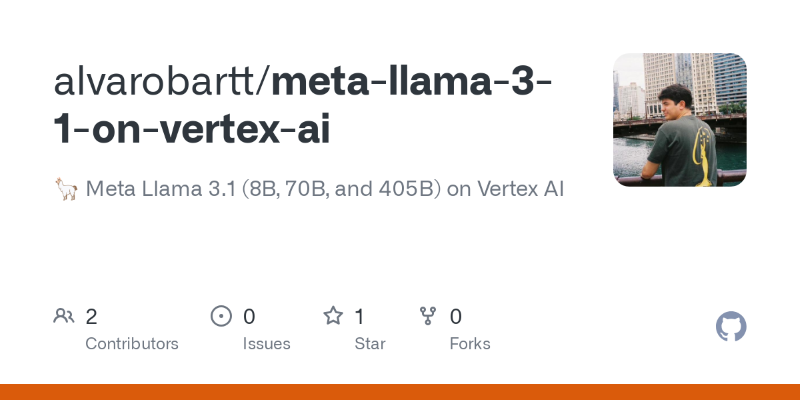Advertisement
Creative writing has always been personal. It comes from somewhere deep—memories, observations, fears, humor. But writing isn’t always easy. Sometimes it flows; other times it drags. With tools like ChatGPT, things have changed. You can now toss an idea into a prompt and watch a full paragraph take shape.
Some writers love the speed. Others feel uneasy about letting a machine touch their work. Whether it’s a tool, a threat, or something in between, it’s worth asking—what does ChatGPT actually do for creative writing, and what might it take away?
ChatGPT is great for writers looking to get started. It can generate dozens of ideas from a single prompt. Whether it's plot suggestions, character traits, or potential themes, it produces content instantly for writers who are stuck or just need a push. This kind of output speeds up the brainstorming phase.
Writing a full scene or short story from scratch takes time. ChatGPT can produce a rough version in seconds. It’s not meant to be final, but it gives writers something to build on. This helps reduce time spent on first drafts and shifts focus toward editing and refining.

ChatGPT can write in various tones and styles—from poetic to dry, dramatic to humorous. Writers can test how a scene reads in different voices and see which one fits best. This kind of style-shifting is useful during early drafts or when reworking specific scenes.
Writing natural dialogue is hard. ChatGPT can simulate conversations between characters based on brief input. This helps writers build back-and-forth exchanges, explore conflict through dialogue, or create more realistic pacing in speech.
Sometimes, writers know what they want to say but can’t quite say it cleanly. ChatGPT can reword clunky sentences while keeping the meaning. It’s a helpful tool for editing awkward phrasing and tightening language during revisions.
Writers often get stuck on naming characters, towns, or businesses. ChatGPT can generate lists of names that fit specific cultural, thematic, or fantasy settings. It also helps create quick descriptions for places or objects, which can be especially helpful when filling in minor story details.
With the right prompt, ChatGPT can simulate genre-specific writing, like noir monologues, space operas, or fairy tale openings. Writers can explore genre conventions and experiment without needing to study samples elsewhere.
For writers who prefer planning, ChatGPT can generate outlines, chapter breakdowns, or scene progressions. It can organize scattered ideas into a readable structure, making it easier to plan longer works like novels or screenplays.
ChatGPT supports multiple languages, making it easier for writers to explore storytelling across cultures. You can draft a story in Spanish, French, or Japanese and compare the tone or structure. It's useful for bilingual authors or those writing for international audiences without starting from scratch.
ChatGPT’s training involves common patterns from huge datasets. As a result, many outputs feel overly familiar. Plots often follow standard arcs. Descriptions rely on clichés. Writers looking for originality may find that the results feel too safe or expected.
Human writers draw from personal emotion and lived experience. ChatGPT doesn’t. It mimics feelings based on patterns, but it doesn’t actually feel. This often leads to flat emotional scenes that sound right on the surface but lack depth underneath.
Good writing often has a strong message running beneath the plot. ChatGPT can mention themes but doesn’t explore them with intention. It doesn’t ask “why” a story matters. Without this, the writing may feel hollow or disconnected from a bigger purpose.
Characters written by ChatGPT can start interesting, but often stay static. It struggles to show natural development, change, or internal conflict over time. For longer works, this results in characters that feel less human and more mechanical.

If you feed ChatGPT only part of your story, it won’t remember the rest unless you include it. That means continuity errors can creep in. It might contradict earlier details, forget relationships, or introduce plot points that don’t align.
ChatGPT produces clean grammar and polished sentences, but this can be misleading. Just because something reads well doesn’t mean it works well in a story. Writers still need to evaluate pacing, tension, and character voice—things grammar alone can’t fix.
Revising creative writing isn’t just about fixing mistakes. It’s about making intentional changes that improve flow, impact, or meaning. ChatGPT can suggest alternatives but doesn’t provide reasoning. This makes it less useful in the deeper revision stages where choices matter most.
When AI generates part of your story, where do your rights begin and end? Publishers, contests, and platforms have varying rules about AI-assisted work. Writers need to think about how much AI involvement is acceptable and whether to disclose it.
ChatGPT often shifts tone mid-story, especially in longer texts. A suspenseful scene may suddenly feel casual or overly formal. This inconsistency breaks immersion and requires careful rewriting. Writers aiming for a stable mood or atmosphere may find the AI's lack of tonal control frustrating and distracting.
ChatGPT offers real value to writers who use it with purpose. It helps get started, speeds up routine parts, and offers quick drafts to reshape. But it isn't a replacement for creative insight, emotional depth, or narrative control. Writing is still a human task, built on choices, instincts, and lived stories. If ChatGPT is used as a helper, not a crutch, it can be part of the process without taking it over. The key is to stay in charge and let the tool stay in the background. The words might come from the screen, but the story still needs to come from you.
Advertisement

Google debuts new tools and an agent protocol to simplify the creation and management of AI-powered agents.

Need to deploy a 405B-parameter Llama on Vertex AI? Follow these steps for a smooth deployment on Google Cloud

IBM AI agents boost efficiency and customer service by automating tasks and delivering fast, accurate support.

How to use permutation and combination in Python to solve real-world problems with simple, practical examples. Explore the built-in tools and apply them in coding without complex math

How CPU Optimized Embeddings with Hugging Face Optimum Intel and fastRAG can run fast, low-cost RAG pipelines without GPUs. Build smarter AI systems using Intel Xeon CPUs

Looking for the best cloud GPU providers for 2025? Compare pricing, hardware, and ease of use from trusted names in GPU cloud services

How to use the Python time.sleep() function with clear examples. Discover smart ways this sleep function can improve your scripts and automate delays

Samsung launches world’s smartest AI phone with the new Galaxy S24 series, bringing real-time translation, smart photography, and on-device AI that adapts to your daily routine

How to apply the COUNT function in SQL with 10 clear and practical examples. This guide covers conditional counts, grouping, joins, and more to help you get the most out of SQL queries

Learn how AWS Strands enables smart logistics, automation, and much more through AI agents.

How indentation in Python works through simple code examples. This guide explains the structure, spacing, and Python indentation rules every beginner should know

Hugging Face and FriendliAI have partnered to streamline model deployment on the Hub, making it faster and easier to bring AI models into production with minimal setup